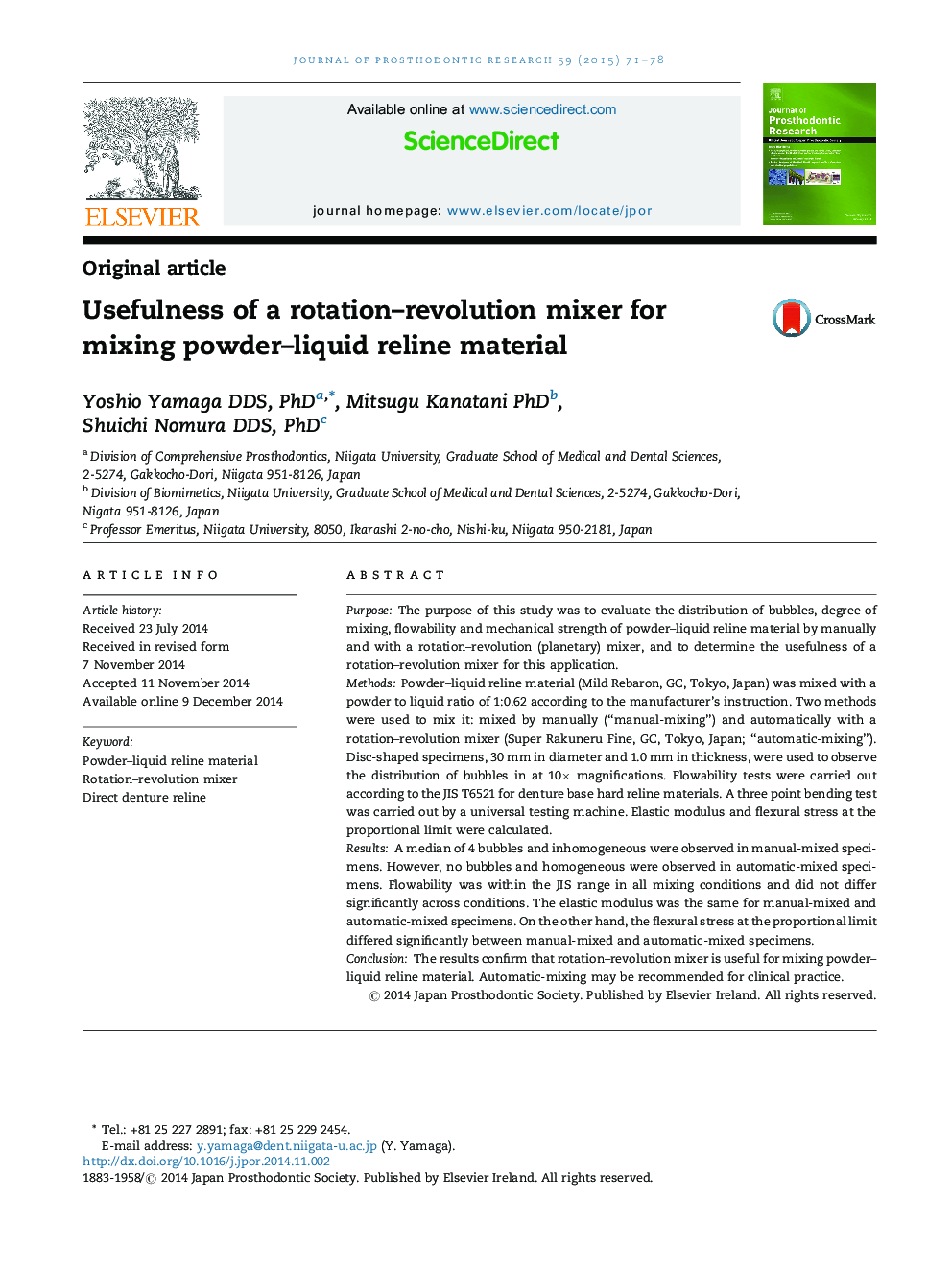| کد مقاله | کد نشریه | سال انتشار | مقاله انگلیسی | نسخه تمام متن |
|---|---|---|---|---|
| 3160676 | 1198558 | 2015 | 8 صفحه PDF | دانلود رایگان |

PurposeThe purpose of this study was to evaluate the distribution of bubbles, degree of mixing, flowability and mechanical strength of powder–liquid reline material by manually and with a rotation–revolution (planetary) mixer, and to determine the usefulness of a rotation–revolution mixer for this application.MethodsPowder–liquid reline material (Mild Rebaron, GC, Tokyo, Japan) was mixed with a powder to liquid ratio of 1:0.62 according to the manufacturer's instruction. Two methods were used to mix it: mixed by manually (“manual-mixing”) and automatically with a rotation–revolution mixer (Super Rakuneru Fine, GC, Tokyo, Japan; “automatic-mixing”). Disc-shaped specimens, 30 mm in diameter and 1.0 mm in thickness, were used to observe the distribution of bubbles in at 10× magnifications. Flowability tests were carried out according to the JIS T6521 for denture base hard reline materials. A three point bending test was carried out by a universal testing machine. Elastic modulus and flexural stress at the proportional limit were calculated.ResultsA median of 4 bubbles and inhomogeneous were observed in manual-mixed specimens. However, no bubbles and homogeneous were observed in automatic-mixed specimens. Flowability was within the JIS range in all mixing conditions and did not differ significantly across conditions. The elastic modulus was the same for manual-mixed and automatic-mixed specimens. On the other hand, the flexural stress at the proportional limit differed significantly between manual-mixed and automatic-mixed specimens.ConclusionThe results confirm that rotation–revolution mixer is useful for mixing powder–liquid reline material. Automatic-mixing may be recommended for clinical practice.
Journal: Journal of Prosthodontic Research - Volume 59, Issue 1, January 2015, Pages 71–78